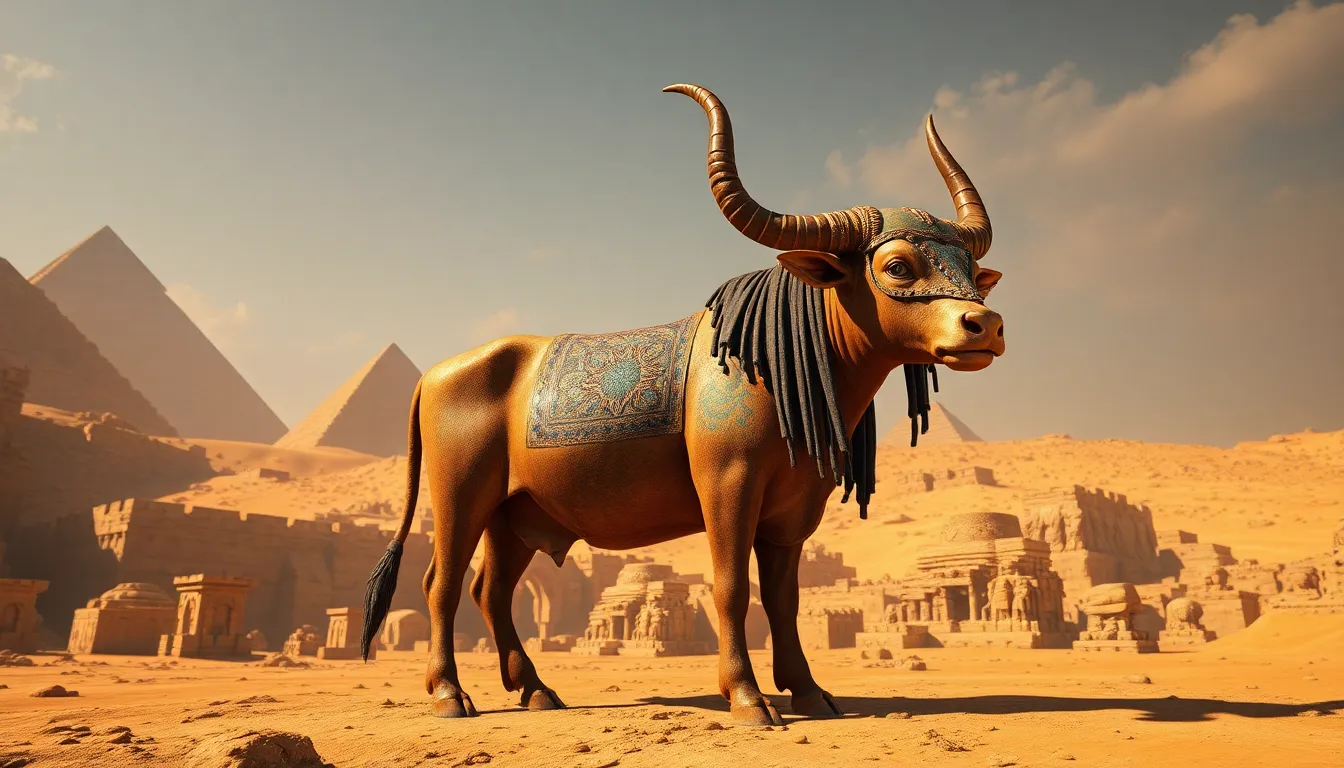The Geography of the Sacred Cow: Myths of Hathor
1. Introduction: Understanding the Sacred Cow in Cultural Context
Cows have held a significant place in various cultures throughout history, symbolizing nourishment, fertility, and maternal care. In ancient Egypt, the cow was not just a livestock animal but a sacred symbol, deeply intertwined with the goddess Hathor. Hathor, one of the most important deities in Egyptian mythology, is often depicted as a cow or a woman with cow horns, symbolizing her nurturing and protective qualities.
2. The Origins of Hathor: A Historical Perspective
Hathor’s origins are rooted in the early stages of ancient Egyptian religion, dating back to the Pre-Dynastic period. She was worshipped as a goddess of the sky and fertility, embodying the essence of motherhood and joy. Hathor was also associated with music, dance, and love, making her a multifaceted deity who influenced various aspects of life.
As the mother of Horus, the sky god, Hathor’s role further solidified her connection to fertility and motherhood. She was often seen as a protective figure, guiding souls in the afterlife, and her worship reflected the values of ancient Egyptian society.
3. Symbolism of the Cow in Ancient Egypt
The cow in ancient Egypt was a powerful symbol of nourishment and fertility. This symbolism can be traced back to the agrarian society that relied heavily on agriculture and livestock for sustenance. Cows were not only a source of milk and meat but also played a crucial role in farming practices, providing labor through plowing fields.
- Nourishment: Cows provided essential food resources, making them vital to the daily lives of ancient Egyptians.
- Fertility: The cow was seen as a symbol of fertility, representing the earth’s abundance and the cycles of life.
- Social Structure: The presence of cattle also indicated wealth and status within the community.
4. Geographic Distribution of Cow Worship in Ancient Civilizations
Worship of cows was not unique to ancient Egypt; it was prevalent in several other cultures around the world. In order to understand the geographic distribution of cow worship, we can consider the following regions:
- Ancient Egypt: Central to the worship of Hathor as the goddess associated with cows.
- India: Cows are revered in Hinduism, symbolizing motherhood and non-violence.
- Mesopotamia: Cows were also significant in the religious practices of ancient Mesopotamian cultures.
These comparisons highlight a shared reverence for cows across different civilizations, emphasizing their importance in social and religious contexts.
5. Myths and Legends Associated with Hathor
Hathor is central to numerous myths and legends in ancient Egyptian belief. One of the most famous myths involves her role in the afterlife, where she is believed to welcome the souls of the deceased into the afterworld.
- The Cow of Heaven: In one myth, Hathor is depicted as the Cow of Heaven, whose milk nourishes the gods and the souls of the dead.
- The Return of the Sun: Hathor also played a role in the daily journey of the sun god Ra, often depicted as leading him through the underworld.
These stories illustrate her significance not just in life but also in the afterlife, showcasing the duality of her nurturing and protective nature.
6. Artistic Representations of Hathor and Cows
Hathor is frequently depicted in ancient Egyptian art, with her images often showcasing her cow-like features. These representations served not only a decorative purpose but also had deep religious significance.
- Statues and Reliefs: Hathor is often shown with cow horns adorned with a sun disk, symbolizing her divine status.
- Hieroglyphics: Cow imagery appears in various hieroglyphs, emphasizing the importance of cows in religious texts and rituals.
- Temple Carvings: Temples dedicated to Hathor often feature intricate carvings that depict her nurturing nature and her connection to fertility.
7. Modern Interpretations and Cultural Impact
Today, the legacy of Hathor and the sacred cow continues to resonate in various cultures. The reverence for cows can be seen in modern practices and ideologies, particularly in regions where agricultural traditions remain strong.
- Contemporary Worship: In India, cows are still revered and protected, reflecting ancient beliefs.
- Cultural Symbolism: Hathor’s image is revisited in modern art and literature, showcasing her enduring impact.
- Feminine Power: Hathor is often viewed as a symbol of feminine strength and nurturing, inspiring contemporary movements that celebrate motherhood and femininity.
8. Conclusion: The Enduring Legacy of the Sacred Cow and Hathor
In conclusion, the sacred cow and the goddess Hathor represent deep-rooted symbols of nourishment, fertility, and maternal care in ancient Egyptian culture. Understanding these symbols allows us to appreciate the complexities of ancient beliefs and their influence on modern society. The cow’s significance transcends geographical and cultural boundaries, revealing a shared appreciation for the nurturing qualities of this majestic animal. As we reflect on these themes, it becomes evident that the legacy of Hathor and the sacred cow continues to inspire and inform our understanding of cultural symbols in a global context.




